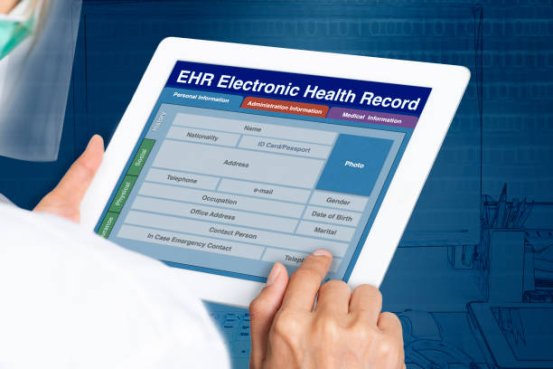EHR Systems in Focus: From PCC Pediatric to Eclipse for Diverse Practices
Medical practices must carefully evaluate electronic health record (EHR) systems, weighing features, costs, and workflow compatibility to ensure efficiency and quality care.
Medical practices must carefully evaluate electronic health record (EHR) systems, weighing features, costs, and workflow compatibility to ensure efficiency and quality care.

Unlocking Benefits: Why EHR Selection Matters for Small Practices
Cloud-based EHR platforms are reshaping the way smaller medical groups operate. These solutions enhance clinical efficiency, improve patient communication, and allow practices to achieve more with limited resources. By reducing the need for expensive infrastructure, they make high-quality digital care tools accessible to independent providers.
1. Cloud-Based Adoption Among Smaller Practices
Across the United States, small and independent practices are rapidly shifting to cloud-based EHRs. These systems deliver all the essential tools—such as scheduling, documentation, and billing—through simplified, intuitive interfaces. For practices without large IT budgets, this trend offers an affordable alternative to complex enterprise systems, without sacrificing essential functionality.
2. Essential Capabilities Driving Growth
Modern EHR systems include key features like e-prescribing, integrated scheduling, billing automation, and robust patient portals. Together, these improve patient engagement and ensure compliance with evolving regulations such as MACRA and MIPS. User-friendly design has become a non-negotiable factor, since cumbersome platforms can increase staff stress, slow operations, and ultimately reduce revenue.
3. Balancing Features with Affordability
Small practices must weigh the importance of functionality against their financial limitations. The ability to share data seamlessly with other healthcare providers adds significant value. Affordable solutions like Practice Fusion stand out in this space, being widely chosen by solo or small group practices for their low cost and ease of deployment.
4. Comparing EHR Platforms
| EHR Solution | Key Features | Best For | Pricing (USD) |
| Practice Fusion | Cloud-based, e-prescribing, scheduling, billing, clinical documentation, portal | Small & independent practices | Free/Low-cost |
| Meditech Expanse | Mobile accessibility, customizable dashboards, clinical decision support | Large health systems | Not specified |
| TruBridge | Health records, customizable workflows, reporting & analytics, imaging | Rural/community hospitals | On request |
These options highlight how different providers—whether small clinics or hospital systems—can select tailored solutions that match their operational size and priorities.
Key Features for US Providers in 2025
1. Customization and Integration
Providers increasingly expect adaptable templates and seamless integration with existing workflows. Effective EHRs should reduce administrative burdens rather than add to them.
2. Telehealth Integration
With telemedicine now a cornerstone of healthcare, features like video visits, screen sharing, and remote monitoring have become indispensable.
3. Behavioral Health Tools
Specialized behavioral health practices require DSM-5 and ICD-10–compliant templates. These improve documentation quality and enhance treatment planning.
4. Automated Billing and E-Prescribing
Automation in these areas reduces paperwork, speeds reimbursements, and improves patient engagement through streamlined services.
5. Mobile-Friendly Access and Reliable Support
Modern practices demand secure, mobile-compatible systems that work across devices, supported by responsive customer service.
Cost vs. Capability: Making Smart Investments
1. Premium vs. Budget Systems
Solutions like Epic, Athenahealth, and Oracle Health offer powerful analytics and customization. However, their price and complexity often put them out of reach for small practices.
2. The Value of Cloud-Based Systems
Affordable options like Practice Fusion provide critical features without unnecessary complexity, making them attractive to independent practices.
3. Evaluating Total Cost of Ownership
Costs extend beyond licensing. Implementation, staff training, feature subscriptions, and third-party integrations must be factored in to avoid financial surprises.
4. Open-Source Solutions
Open-source systems can cut licensing costs by up to 80%, but they require in-house IT skills for maintenance, making them practical only for organizations with sufficient technical support.
5. Aligning With Practice Strategy
An effective EHR investment balances initial cost against long-term benefits, ensuring the chosen system enhances both operational and financial performance.
Streamlined Workflow Integration
1. Market Shifts Toward Efficiency
Today’s EHR market emphasizes systems that work in harmony with daily operations rather than complicating them.
2. Integration-Centered Features
Tools such as customizable templates, patient portals, drag-and-drop scheduling, and telehealth capabilities are driving adoption, reducing administrative burdens.
3. Balancing Complexity with Usability
Platforms like CareCloud deliver high levels of security and customization, well suited for larger practices, though onboarding and data imports may pose challenges.
4. Future Directions
Next-generation systems are expected to prioritize modular functionality, automation, and intuitive interfaces. Those that reduce complexity and boost efficiency will lead the market.
Q&A
Why are smaller practices moving to cloud-based EHRs?
Because they combine affordability, ease of use, quick onboarding, and essential tools such as billing and patient portals.
Which EHRs fit different practice sizes?
Practice Fusion works best for independent practices; Meditech Expanse suits larger health systems; TruBridge supports rural hospitals.
What features are critical in 2025?
Customization, integration, telehealth, DSM-5/ICD-10 templates, e-prescribing, mobile access, and strong customer support.
How can providers balance cost with capability?
By assessing the total cost of ownership, considering open-source options, and aligning purchases with long-term business goals.
How can workflow efficiency improve?
By selecting EHRs with customizable templates, telehealth functions, patient portals, and integrated scheduling that reduce repetitive tasks.
References:
https://www.ehrinpractice.com/small-practice-ehrs.html
https://digitalhealth.folio3.com/blog/what-are-the-top-5-ehr-systems/
https://neklo.com/blog/best-ehr-software
